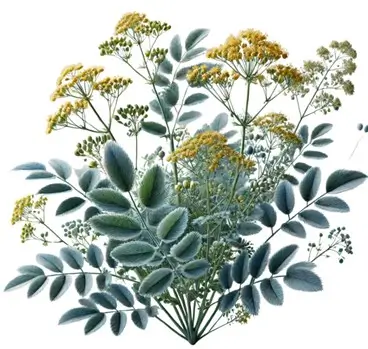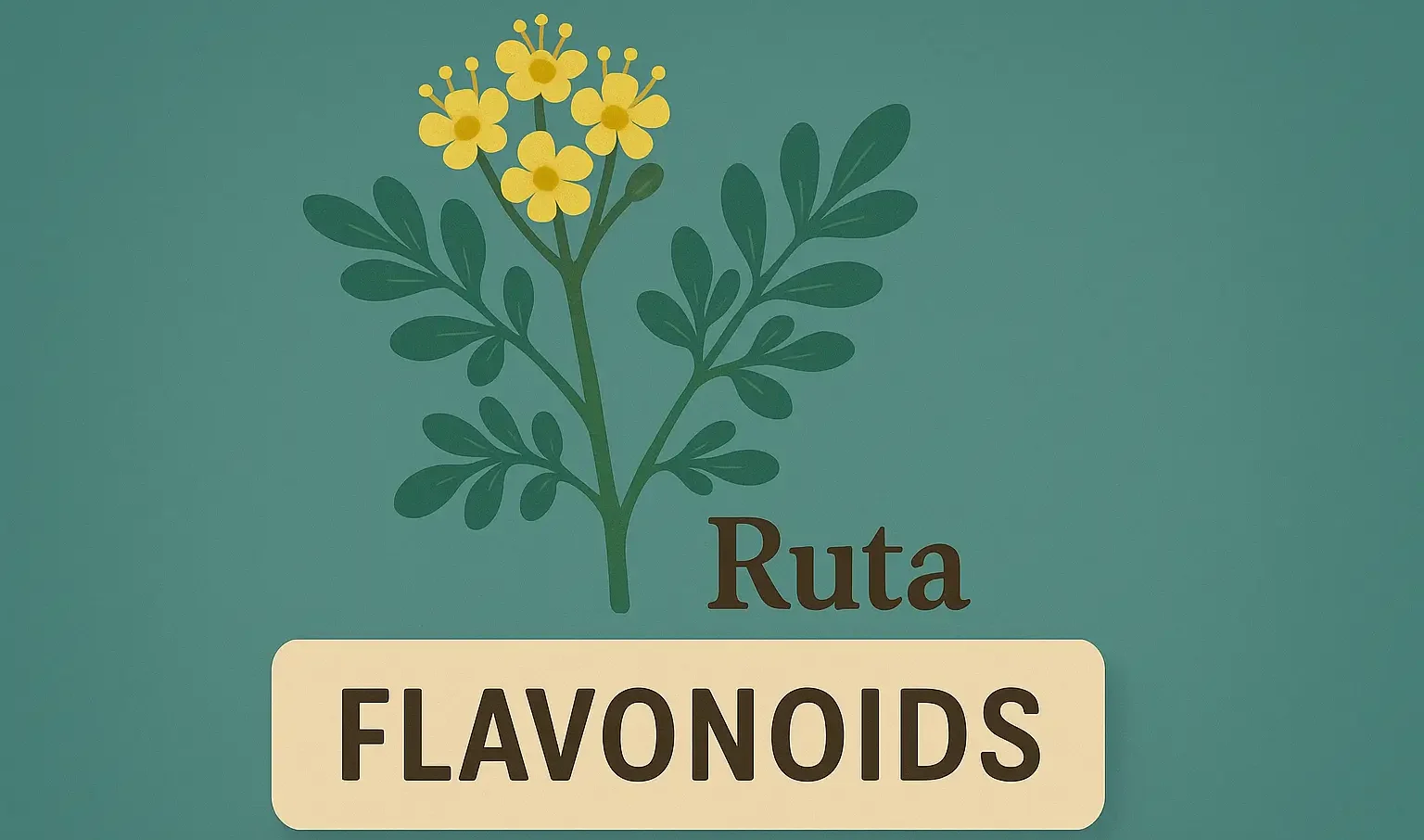Introduction to Ruta (Flavonoids):
- Ruta, primarily Ruta graveolens (Rue), is rich in flavonoid and exhibits anti-inflammatory, antispasmodic, and antimicrobial properties.

Advertisements
Synonyms of Ruta (Flavonoids):
- Common name: Rue
- Scientific name: Ruta graveolens
- Other names: Herb-of-grace, Common rue
Biological Source:
- Derived from the aerial parts (leaves and stems) of Ruta graveolens.
Advertisements
Family:
- Rutaceae
Composition:
- Major flavonoids:
- Rutin (quercetin glycoside)
- Quercetin
- Hesperidin
- Apigenin
Advertisements
Chemistry:
- Class: Flavonoids (flavonols and flavones).
- Structure:
- Rutin: Glycoside of quercetin with sugar moieties.
- Quercetin: A polyhydroxy flavonoid with antioxidant activity.
- Solubility: Water-soluble due to glycosidic linkages.
Therapeutic Uses:
- Antioxidant: Rutin and quercetin combat oxidative stress.
- Capillary Strengthening: Rutin enhances capillary resistance, aiding conditions like varicose veins and hemorrhoids.
- Anti-inflammatory: Rutin and hesperidin inhibit inflammatory pathways.
- Antispasmodic: Relaxes smooth muscles, alleviating gastrointestinal and uterine spasms.
- Antimicrobial: Effective against various bacteria and fungi.
Commercial Applications of Ruta (Flavonoids):
- Rutin supplements: For vascular health (varicose veins, hemorrhoids).
- Herbal teas/tinctures: Used for antispasmodic and sedative effects.
- Cosmetics: Rutin and quercetin in anti-aging and skin-lightening products.
Advertisements

